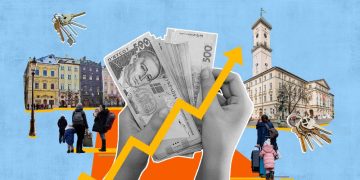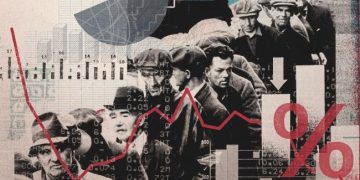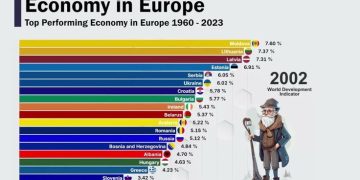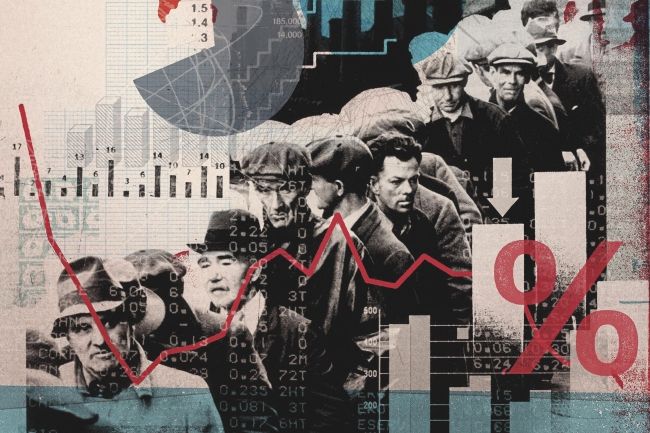Introduction: A New Financial Era After the Pandemic
As the world moves deeper into the post-pandemic decade, China finds itself at a pivotal moment in its financial evolution. The global economic landscape has dramatically shifted—supply chains have reorganized, inflation cycles have become more unpredictable, and geopolitical tensions have reshaped trade alliances. For China, the challenge is not merely recovery but redesign: how to stabilize its financial system while positioning itself for greater influence within a fragmented global economy.
Since 2020, China has adopted what many analysts view as one of the most complex financial recalibration strategies in its modern history. The country is simultaneously confronting domestic structural pressures—such as local debt, real estate downturns, and demographic shifts—while expanding its global economic footprint through tighter capital diplomacy, yuan internationalization, and new multilateral finance mechanisms.
China’s post-pandemic financial strategy thus revolves around three pillars:
- Stability – ensuring systemic resilience amid uncertainty
- Reform – recalibrating policy levers to build a more sustainable, innovation-centric economy
- Global Influence – reshaping international finance through the yuan, trade networks, and geopolitical alignment
This article explores each pillar in depth and analyzes how China’s financial recalibration reshapes Asia’s economic future and the global economy at large.
1. Stabilizing the Financial System: China’s Quest for Resilience
1.1 Real Estate: Managing the “Big Adjustment”
China’s housing sector has entered its most significant correction in 25 years. In the 2010s, real estate contributed up to 30% of GDP, directly and indirectly. But by 2023–2025, defaults, unfinished projects, and falling home prices emphasized the need for structural recalibration.
China’s strategy for real estate stabilization includes:
(1) Prioritizing completion over expansion
Policies now stress delivering existing homes rather than launching new projects. The government channels credit toward “guaranteed delivery projects,” restoring public confidence.
(2) Transitioning from investment-driven to living-driven housing
Housing is repositioned as livable infrastructure, not speculative assets—aligning with the principle: “Houses are for living in, not for speculation.”
(3) Supporting local governments without moral hazard
Beijing is providing liquidity windows while discouraging reckless borrowing. The objective is a “soft-landing” of a decades-long property boom.
1.2 Local Government Debt: The Silent Pressure Point
China’s local governments accumulated sizable debt through Local Government Financing Vehicles (LGFVs). Post-pandemic fiscal pressure—tax reductions, lockdown spending, infrastructure push—expanded liabilities.
China’s response:
- Debt restructuring through bond swaps
- Stricter oversight of LGFVs
- Promoting alternative revenue streams, such as consumption taxes
- Shifting focus toward central-local fiscal rebalancing
Analysts view it as a multi-year project that will redefine China’s entire public finance architecture.
1.3 Financial Market Stability: Avoiding Systemic Risk
China’s regulators tightened oversight in:
- shadow banking
- online lending
- asset management
- trust products
- fintech credit risks
The goal: prevent contagion and ensure “long-term stability with controllable volatility.”
China is building a financial system less dependent on leverage and more aligned with innovation-driven growth.
2. Reform: China’s Long-Term Economic Reorientation
2.1 Dual Circulation Strategy: The Blueprint for A New Economy
Announced in 2020, the dual circulation strategy (DCS) aims to balance:
Internal circulation – domestic consumption, innovation, and supply-side upgrading
External circulation – global trade, export competitiveness, and capital flows
DCS signals a shift away from reliance on exports and investment alone.
Reforms under DCS include:
- boosting household income to drive domestic consumption
- supply chain upgrading in semiconductors, EVs, AI, biotech
- promoting advanced manufacturing clusters
- reducing import dependency in critical sectors
This marks China’s transition into a self-sustaining high-tech economy.
2.2 Capital Market Reform: Opening with Caution
China aims to build “high-quality capital markets” through:
- the registration-based IPO system
- STAR Market’s expansion
- ESG standards and green finance
- foreign access to bonds and equity
- strengthening transparency and corporate governance
China has become the world’s second-largest bond market, and its stock market continues integrating with global indices.
The reform principle is clear:
Open the capital market, but ensure stability and strategic control.

2.3 Innovation Finance: Tech as the Core Economic Engine
China’s financial strategy is deeply intertwined with technological self-sufficiency.
Key areas include:
(1) Semiconductors
Massive investment in fabs, materials, and domestic equipment.
(2) Electric Vehicles & Batteries
China leads global EV sales and dominates lithium battery supply.
(3) Artificial Intelligence
Government-backed AI clusters and sovereign AI computing resources.
(4) Green energy & climate finance
China is the world’s largest issuer of green bonds.
Innovation is not a sector—it’s the central pillar of China’s future financial growth.
3. Global Influence: China’s Expanding Financial Footprint
3.1 Yuan Internationalization: Slow but Steady Momentum
The yuan’s global rise continues:
- inclusion in IMF’s SDR basket
- increased use in oil and LNG settlements
- rapid growth in cross-border CIPS transactions
- trade invoicing with Belt & Road partners
China aims to reduce dependency on the US dollar by expanding:
- energy yuan settlement
- BRICS financial networks
- bilateral currency swaps
- offshore yuan hubs (Singapore, Hong Kong, Dubai)
The long-term vision is a multi-polar currency system.
3.2 Geoeconomic Influence: Belt and Road 2.0
The Belt and Road Initiative (BRI) has subtly shifted post-pandemic:
- from large infrastructure projects
- toward smaller, greener, more sustainable investments
Focus now includes:
- digital infrastructure
- renewable energy finance
- logistics and smart ports
- cross-border digital payments
China is shaping a financial ecosystem that connects Asia with the Middle East, Africa, and Europe.
3.3 Regional Integration: China and ASEAN
ASEAN is now China’s largest trading partner.
Financial cooperation includes:
- cross-border yuan settlement
- joint digital payment systems
- RCEP free trade mechanisms
- regional manufacturing integration
China is building a Pan-Asian financial connectivity system that supports supply chain resilience and new trade flows.
4. Challenges: What Could Slow China’s Financial Ambition?
Despite its strong strategic planning, China faces challenges:
1. Demographics: aging population and shrinking workforce
2. Productivity slowdown in certain sectors
3. Geopolitical tension with the US and its allies
4. Real estate overhang still unwinding
5. Global reshoring of supply chains creating long-term competition
6. Need for deeper financial liberalization without sacrificing stability
China must navigate these risks while advancing reforms and global ambitions.
5. Outlook: China’s Role in the Future Global Financial Order
China’s post-pandemic financial strategy signals three long-term trends:
(1) A Pivot from Real Estate to Innovation
Tech, manufacturing, and green energy will drive the next 20 years.
(2) A More Controlled but Open Capital Market
China will continue opening—but on its own terms.
(3) A Multi-polar Global Finance System
China will not replace the dollar, but it will reshape global finance into a more diversified system.
Conclusion
China’s post-pandemic financial strategy represents one of the world’s most ambitious economic recalibrations. By prioritizing stability, advancing structural reform, and expanding global financial influence, China aims to secure its position in a world where economic boundaries are being redrawn.
The future of global finance—especially in Asia—will be heavily shaped by how China navigates the next decade. Whether the world moves toward greater cooperation or sharper geopolitical division, China’s financial strategy will remain one of the defining forces of the 21st-century economic order.
































